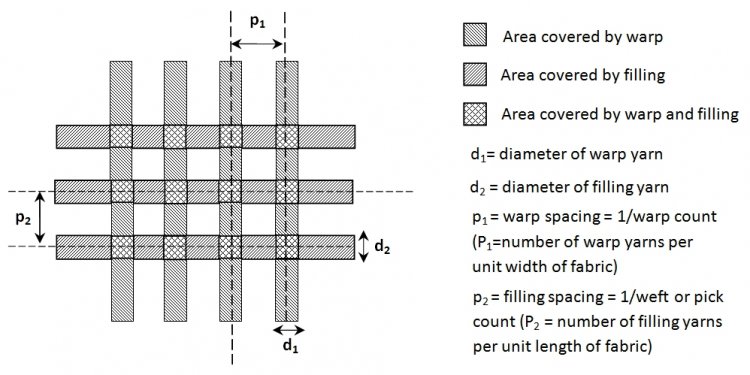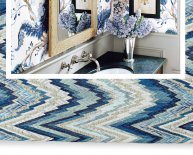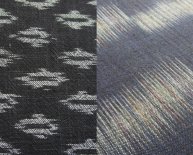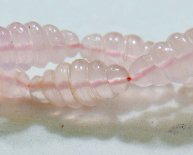
Woven Material Definition
This is the class for woven, knitted, nonwoven, or felt article claimed as a fabric, having structural integrity resulting from forced interassociation of fibers, filaments, or strands, the forced interassociation resulting from processes such as weaving, knitting, needling hydroentangling, chemical coating or impregnation, autogenous bonding (i.e., heat- and/or pressure-promoted welding or solvent bonding) or felting, but not articles such as paper, fiber-reinforced plastic matrix materials (FRP), or other fiber-reinforced materials wherein fibers are present only as a filler material.
This class is an integral part of Class 428 (after subclass 223). It incorporates all the definitions and rules as to subject matter of Class 428.
This is not the location for a woven or knitted fabric which is no more than, respectively, the product of a loom or knitting machine which has not been further treated. Such a product of a loom is classified in Class 139, subclasses 420+. Such a product from a knitting machine is classified in Class 66, subclasses 169+.
This is the location for a woven or knitted fabric which has been subjected to further treatment after having been removed, respectively, from the loom or knitting machine, and all treated and untreated nonwoven fabrics, except those treated by a drying process or a chemical modification which effects chemical reaction within the material composing the woven, knitted, or nonwoven fabric. A fabric which has been dyed or subjected to chemical modification effecting reaction within the material composing the fabric is classified in Class 8, except where the chemical modification results in converting the material composing the fabric to carbon. Carbon fabrics, per se, are classified in Class 423, subclasses 447.1+.
This is not the location for nonwoven sheets produced by wet-laying fiber slurries on a screen (i.e., papers). Papers, per se, are classified in Class 162, subclasses 100+.
Fiber-reinforced plastic matrix materials (FRP) or fiber-reinforced inorganic matrix materials, per se, are classified in Class 428, subclasses 292.1+.
|
The definitions for FOR 100-FOR 167 below correspond to the definitions of the abolished subclasses (224-291) under Class 442 from which these collections were formed. See the Foreign Art Collection schedule for specific correspondences. [Note: The titles and definitions for indented art collections include all the details of the one(s) that are hierarchically superior.] |
|
| Foreign art collection for a product in which the web or sheet is disclosed as useful in the manufacture of clothing, draperies, upholstery, shoes or their reinforcements, or tire fabric reinforcements or other such wearing or household uses such as roofing felt and is claimed as a textile, cloth or fabric or the equivalent thereof. | |
| Foreign art collection for a product not elsewhere provided for in which the structurally defined element or component comprises strands, strand-portions* or relatively narrow ribbon elements mechanically intertangled, interlooped, interwoven or intertwined. | |
| Foreign art collection for a product wherein at least some of the cross-joined constituents are relatively narrow ribbon-like elements mechanically interengaged with similar elements or with strands or strand-portions. | |
| Foreign art collection for a product which consists of or includes a layer of strand material in a nonparallel arrangement with portions of the strand material interlocked with one another. | |
| Foreign art collection for a product in which the material comprises strands of glass. | |
| Foreign art collection for a product in which constituent strands of the fabric are permanently either (a) deformed, (b) elongated, (c) enlarged in diameter, or (d) reduced in length following assembly of said strands to form the product or some physical or chemical characteristic of the strand is recited. | |
| Foreign art collection for a product in which the layer or component, or a portion or strand thereof possesses a relatively high degree of extensibility longitudinally and/or laterally of the web and the ability to resile from the extension with substantially no permanent deformation. | |
| Foreign art collection for a product comprising individually resilient strands or strand-portions. | |
| Foreign art collection for a product which also includes a plurality of individual strands or strand-like strips lying side-by-side in a layer, whether touching or not and extending generally in the same direction without interengagement with any other strand or strip. | |
| Foreign art collection for a product wherein the strand layer or component is part of a composite web which also includes a layer or component which consists of or includes fibers*. | |
| Foreign art collection for a product in which adjacent layers of the composite web are secured to each other by intertanglement of the fibers of one layer with an adjacent layer, the intertanglement being disclosed as accomplished by the use of barbed needles passing through the layers. | |
| Foreign art collection for a product in which the fibers or any of the layers or components are covered or saturated, at least in part, with extraneous material or in which layers or components or constituents thereof, are joined to each other by an adhesive substance. | |
| Foreign art collection for a product in which the fibers or any of the layers or components are covered or saturated, at least in part, with extraneous material or in which at least some of the layers or components or constituents thereof are joined together by an adhesive substance. | |
| Foreign art collection for a product which includes material in the form of small particles embedded in or adhered to the surface of the web. | |
| Foreign art collection for a product wherein the layer or component of interengaged strands is enclosed within a layer or between layers of nonstrand material. | |
| Foreign art collection for a product wherein the enclosing layer(s) consists of or includes fibers. | |
| Foreign art collection for a product which includes material in the form of small or minute particles incorporated as a distinct layer of the product, embedded therein or adhered to a surface matter. | |















